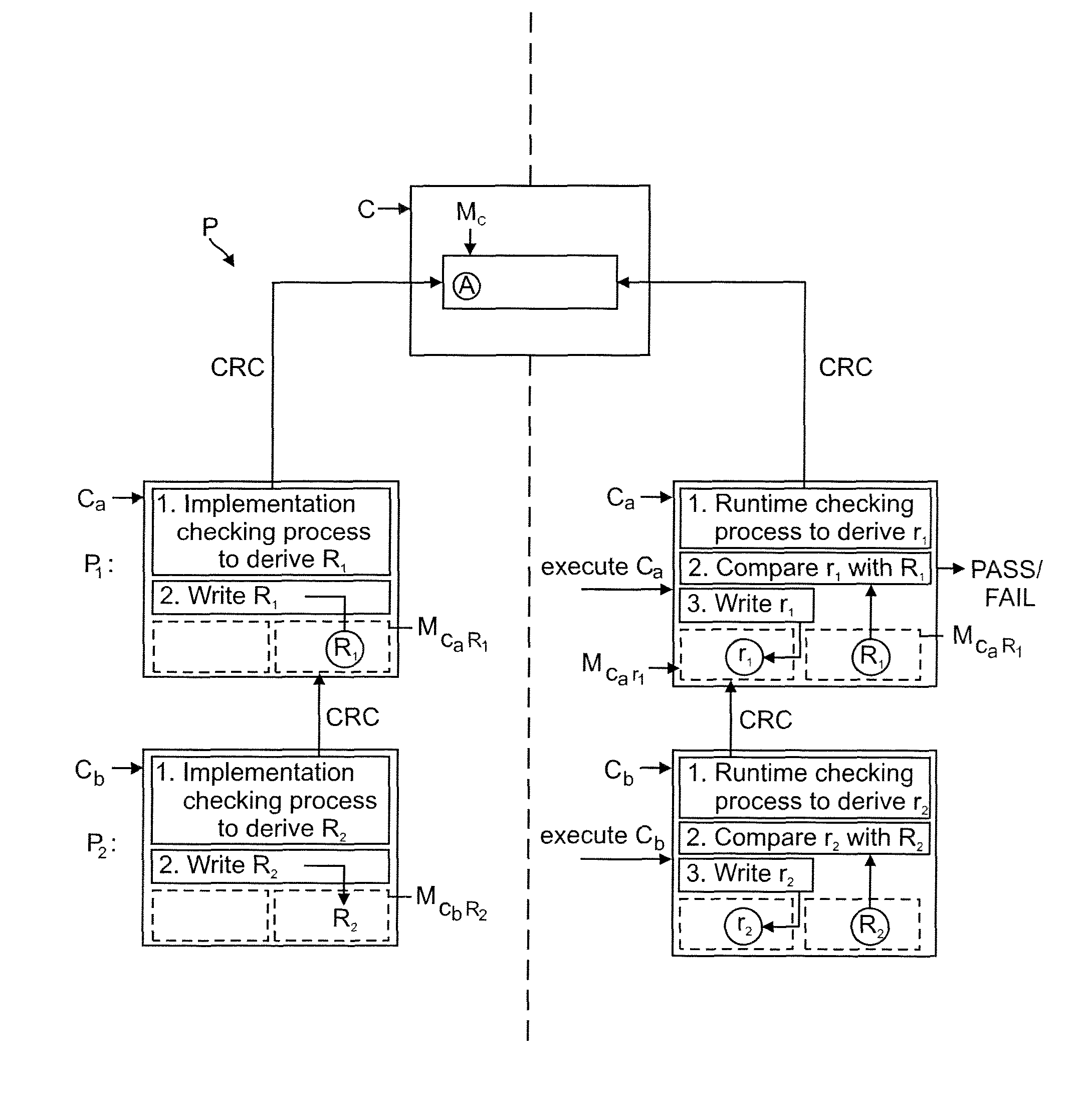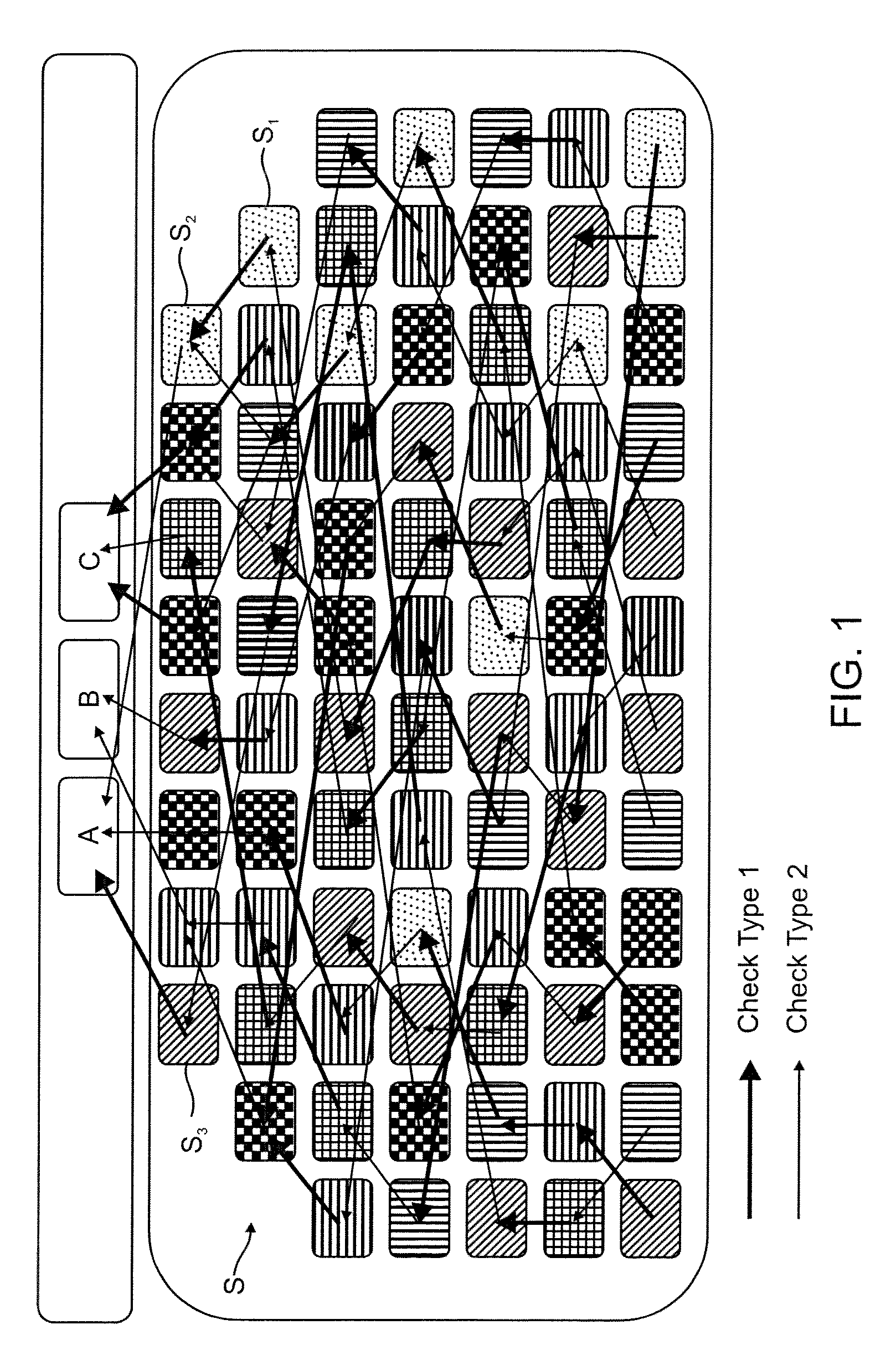Anti-tamper techniques
a technology of anti-tampering and anti-tampering, applied in the field of software security, can solve the problems of stealing intellectual property from applications, unlicensed access to certain features, and affecting the experience of honest players,
- Summary
- Abstract
- Description
- Claims
- Application Information
AI Technical Summary
Benefits of technology
Problems solved by technology
Method used
Image
Examples
Embodiment Construction
[0047]FIG. 1 shows a program code portion which has been divided into a plurality of code segments comprising three root code segments A, B and C and a plurality of sub-code segments S forming eight sequences of code segments. In this embodiment, the program code portion has been compiled and, thus the positions of the sub-code segments represent their distribution throughout the compiled application.
[0048]In this embodiment, the root code segments represent segments of code which comprise means defining attributes of proper use of the program which have been specified by the developer. These attributes may include, for example, limitations imposed on the use of the program or checks that are to be performed by the program, such as checking that the user of the program has purchased the full version of the application, or has a license to use the application.
[0049]The different shading of the segments represents the method that is used to disguise the presence of the checking code w...
PUM
 Login to View More
Login to View More Abstract
Description
Claims
Application Information
 Login to View More
Login to View More - R&D
- Intellectual Property
- Life Sciences
- Materials
- Tech Scout
- Unparalleled Data Quality
- Higher Quality Content
- 60% Fewer Hallucinations
Browse by: Latest US Patents, China's latest patents, Technical Efficacy Thesaurus, Application Domain, Technology Topic, Popular Technical Reports.
© 2025 PatSnap. All rights reserved.Legal|Privacy policy|Modern Slavery Act Transparency Statement|Sitemap|About US| Contact US: help@patsnap.com



